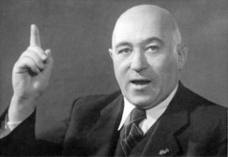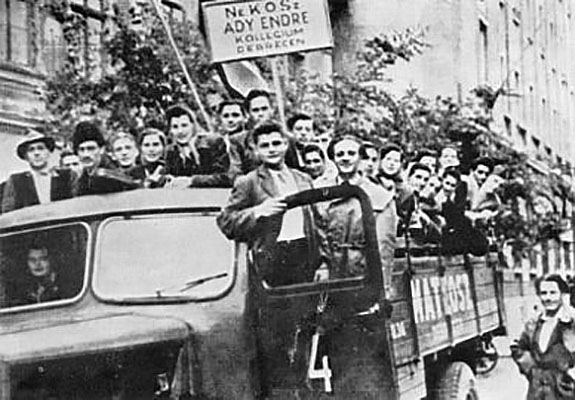


Rákosi, Mátyás
(1892-1971)
Rakosi was a dogged ideologue and a ruthless dictator. The official press called him “Great Teacher” and “Stalin’s Best Hungarian Pupil,” but historians declared him “more Stalinist than Stalin.” In the popular mind he lived as an “Evil Troll,” or “fuzzy” making fun of his bald pate.
Born into a merchant family in 1892, he volunteered to the Army in WWI, captured by the Russians early on, and indoctrinated in the new Soviet State. Returning in 1918, he became a founding member of the Hungarian Communist Party and Army Commander of the disastrous and bloody Hungarian Commune. The “Hungarian Soviet” in three months managed to lose all goodwill for Hungary – resulting in the Versailles Treaty that gave away 70% of its territory. The Red Terror was followed by the White Terror. Rakosi was jailed, then exiled to the Soviet Union, where he became a leader in the Comintern – and a chief denouncer of his Hungarian comrades to Stalin’s death-machine.
 He returned to Hungary in 1945 with the Soviet troops, and became head of the Hungarian Communist Party. When they resoundingly lost the 1947 elections, he had the winning Smallholders Party disqualified, repeated the elections, sending “activists” from town to town on trucks – resulting in a 90% Communist victory.
He returned to Hungary in 1945 with the Soviet troops, and became head of the Hungarian Communist Party. When they resoundingly lost the 1947 elections, he had the winning Smallholders Party disqualified, repeated the elections, sending “activists” from town to town on trucks – resulting in a 90% Communist victory.
 He amassed all leading posts in the government and built a Cult of Personality, his picture was in every house – next to Stalin’s – and his “wisdom” quoted in every speech.
He amassed all leading posts in the government and built a Cult of Personality, his picture was in every house – next to Stalin’s – and his “wisdom” quoted in every speech.
Rakosi ruthlessly pursued the Stalinist agenda of forced collectivization, and class warfare to eliminate the aristocracy, “capitalist element,” as well as the intelligentsia and “cosmopolitanism.” People were abducted from their homes in the dead of the night, never to be seen again. At some point 10% of the population was in “labor camps.”
His true, made-up or imagined opponents within the Communist Party, including some of his closest allies, were put on trial on trumped up charges, many tortured and executed.
However, he was facing rising discontent and lost his grip of power. He was relieved of his post by Andropov on the day of the hijacking in July 1956 – and sent to Moscow “for treatment.”
He was never allowed to return to Hungary, and died in Siberia on February 5, 1971.




